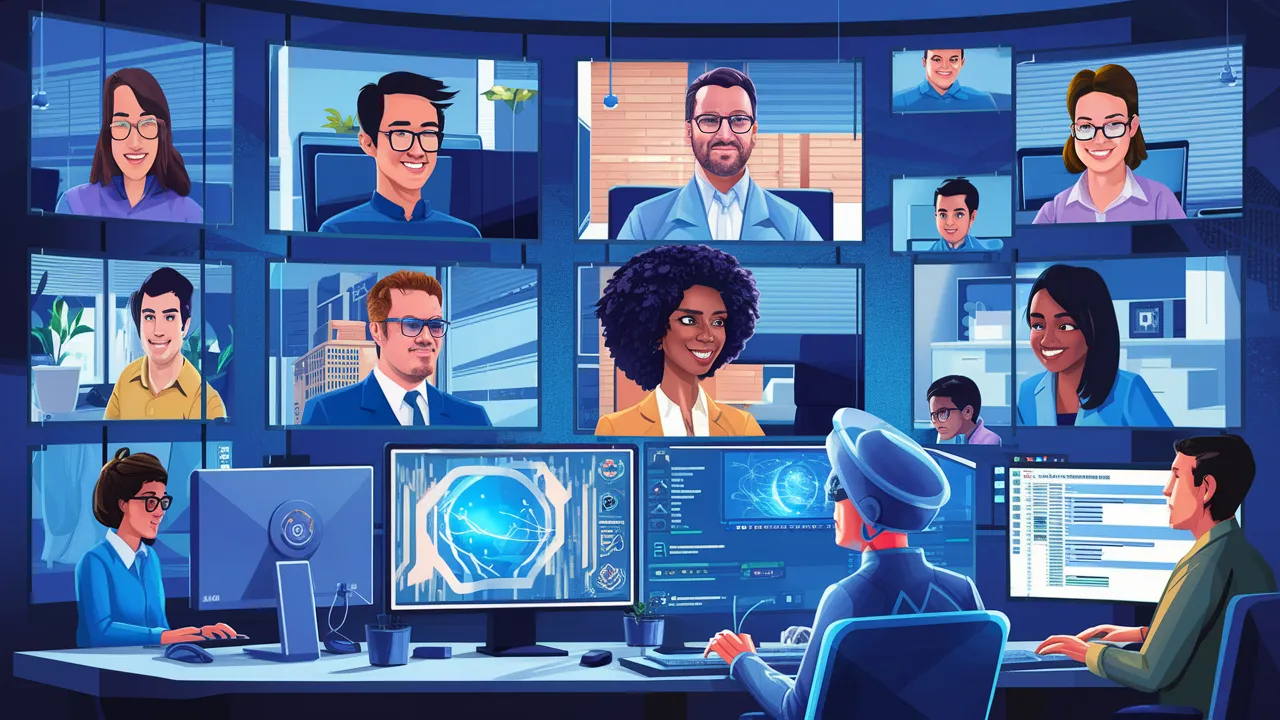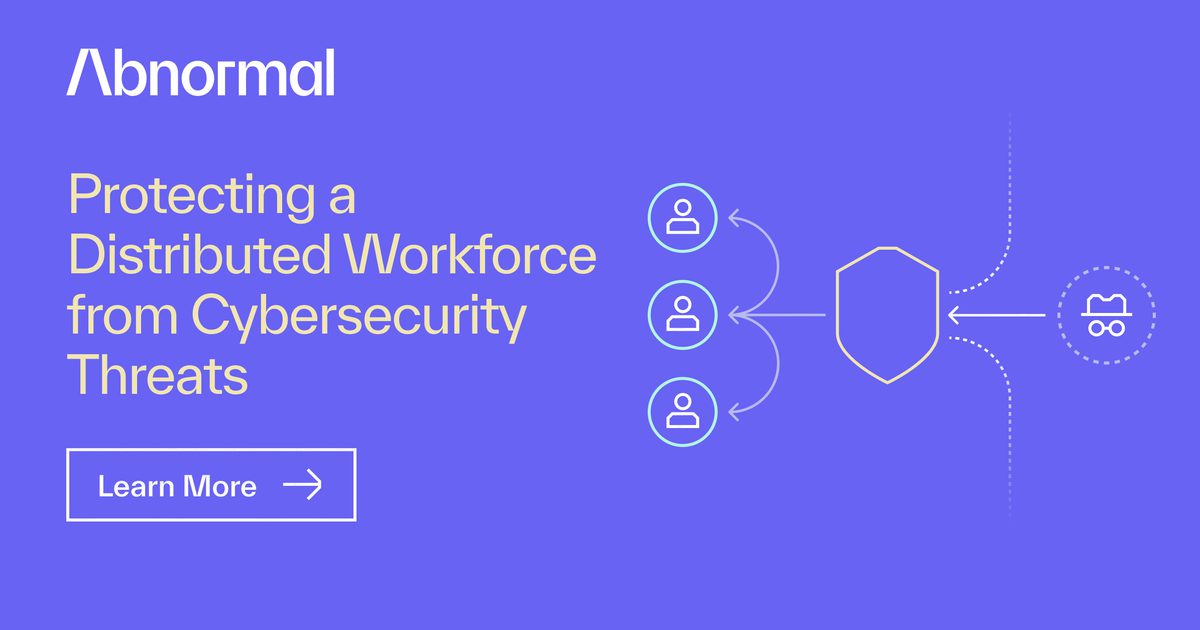Cybersecurity in Distributed Workforces: Protecting Your Remote Teams in a Changing Landscape
The rise of distributed workforces has fundamentally changed how businesses operate. With employees working from various locations—whether at home, co-working spaces, or remote offices—organizations are facing new challenges, especially in cybersecurity. Ensuring the protection of sensitive data, networks, and company systems is more critical than ever before.
As organizations embrace flexible work models, it’s essential to rethink cybersecurity strategies. This article delves into the cybersecurity challenges in distributed workforces and provides actionable solutions to mitigate risks and secure remote teams.

The Growing Importance of Cybersecurity in Distributed Workforces
As remote work and hybrid work models gain popularity, cybersecurity becomes a top priority for organizations. Distributed workforces are often spread across different time zones and geographic locations, making it difficult to maintain a centralized, secure environment. The lack of on-site supervision, the use of personal devices, and remote access to company networks introduce numerous vulnerabilities.
However, remote work doesn’t have to mean increased risk. With the right cybersecurity protocols and tools, businesses can protect their distributed workforce from a variety of threats, such as:
- Phishing attacks
- Data breaches
- Ransomware
- Insider threats
- Unsecured devices and networks
To effectively secure a distributed workforce, companies need to implement a comprehensive cybersecurity strategy that incorporates advanced technologies, employee training, and rigorous access controls.
Key Cybersecurity Challenges for Distributed Workforces
1. Decentralized Security Management
With employees working from various locations, traditional cybersecurity models that rely on a central, on-premise network no longer suffice. The need for constant, remote access to company resources means that cybersecurity must be applied across diverse networks and devices, both in the office and outside it.
This decentralization creates several challenges:
- Lack of visibility: IT teams may struggle to monitor remote systems and detect vulnerabilities.
- Complex access controls: Managing permissions and access for remote workers across different environments is complicated.
- Inconsistent security standards: Employees may use personal devices that don’t meet corporate security requirements.
2. Increased Risk of Cyberattacks
Cybercriminals are increasingly targeting distributed workforces, seeing them as vulnerable due to the lack of physical oversight and the spread of sensitive data across multiple locations. The shift to remote work has accelerated the frequency of attacks such as phishing, ransomware, and man-in-the-middle attacks, all of which can lead to severe data breaches.
For example, many employees inadvertently click on malicious links or attachments in emails, making them easy targets for phishing scams. With employees using a variety of devices and networks, maintaining robust defenses becomes more challenging.
3. Unsecured Devices and Networks
Distributed workforces often rely on personal devices such as laptops, smartphones, and home Wi-Fi networks. Unfortunately, these devices and networks may not be equipped with the necessary security features. Unencrypted data, unpatched software, and weak password practices can make devices more susceptible to cyberattacks.
Moreover, employees may not always use Virtual Private Networks (VPNs) or multi-factor authentication (MFA), which are essential for safeguarding online activities and ensuring secure connections when accessing corporate data remotely.
Strategies for Securing Distributed Workforces
1. Implement Multi-Factor Authentication (MFA)
Multi-factor authentication (MFA) is one of the most effective tools to secure remote workers. MFA requires users to verify their identity through multiple forms of authentication, such as a password and a biometric scan or an authentication code sent to their phone. By requiring more than just a password, MFA adds an extra layer of security, reducing the likelihood of unauthorized access.
For companies with distributed teams, implementing MFA across all platforms, systems, and devices can significantly mitigate the risk of unauthorized access, especially in case of password breaches or phishing attacks.
2. Deploy Virtual Private Networks (VPNs)
A Virtual Private Network (VPN) is crucial for ensuring secure remote connections. When employees connect to company networks from their homes or public Wi-Fi hotspots, a VPN encrypts their internet traffic, protecting data from hackers and malicious actors.
Without a VPN, remote workers are vulnerable to man-in-the-middle attacks, where cybercriminals intercept data being transferred between devices and the corporate network. VPNs are an essential tool for maintaining secure communications, especially when employees access sensitive company data from various locations.

3. Regular Security Awareness Training
Employee education is one of the most powerful ways to combat cybersecurity threats. Security awareness training equips employees with the knowledge to recognize threats like phishing emails, suspicious links, and unsafe practices.
With remote workers, the risk of falling for social engineering attacks is even greater. Regular training can help ensure that employees understand the importance of password hygiene, recognizing malicious activity, and taking the necessary steps to report potential threats.
Training should include:
- Phishing simulations: Help employees identify phishing emails in a controlled environment.
- Password management: Encourage the use of strong passwords and password managers.
- Device security: Educate on securing devices with encryption, firewalls, and the importance of software updates.
4. Secure Endpoint Devices
Endpoint devices are often the most vulnerable points in a distributed workforce’s network. Laptops, smartphones, and tablets that employees use to access company resources must be equipped with proper security measures. This includes:
- Antivirus software to detect and block malicious programs.
- Encryption to protect data stored on devices in case of theft or loss.
- Remote wipe capabilities, allowing IT administrators to delete sensitive data from lost or compromised devices.
- Mobile Device Management (MDM) software to enforce security policies on employee devices.
Ensuring that endpoint devices are fully secured is crucial in preventing data breaches and protecting company assets.
5. Cloud Security Solutions
As businesses move towards cloud-based systems and data storage, ensuring cloud security is paramount. A distributed workforce typically accesses cloud services from various locations and devices, which introduces additional security risks.
Cloud service providers often offer built-in security features, but it’s important to implement additional protections such as:
- Encryption for data at rest and in transit.
- Access controls to restrict who can view and modify cloud resources.
- Regular audits to track usage and detect unusual activities or unauthorized access.
By strengthening cloud security, companies can safeguard critical data and ensure that remote workers can access the tools they need without compromising security.

The Role of AI in Cybersecurity for Distributed Teams
Artificial Intelligence (AI) is increasingly being used to enhance cybersecurity measures in distributed environments. AI-driven security tools can help identify threats more quickly and respond to incidents faster than traditional methods. AI is particularly useful for:
- Real-time threat detection: AI can analyze large volumes of data to spot potential threats or anomalies, reducing the time to detect cyberattacks.
- Behavioral analysis: By monitoring user behavior, AI tools can identify suspicious activities that may indicate a breach or insider threat.
- Automated responses: AI can trigger automatic responses to known threats, such as blocking malicious IP addresses or isolating compromised devices.
With the complexity of modern cyber threats, AI provides valuable support in securing distributed teams.
Frequently Asked Questions (FAQs)
Q1: What are the most common cybersecurity threats to distributed workforces?
The most common threats include phishing attacks, ransomware, data breaches, man-in-the-middle attacks, and insider threats. These attacks exploit the vulnerabilities created by remote work, such as unsecured devices and networks.
Q2: How can companies secure their remote teams?
Companies can secure their remote teams by implementing multi-factor authentication (MFA), deploying VPNs, providing security awareness training, and ensuring that endpoint devices are properly secured. Additionally, using cloud security solutions and AI-powered tools can enhance protection.
Q3: How do you manage cybersecurity in a hybrid work environment?
In a hybrid work environment, it’s essential to implement consistent cybersecurity policies that apply whether employees are working from the office or remotely. This includes enforcing secure access controls, using VPNs, and ensuring that all devices are properly secured, whether in the office or at home.
Q4: Is AI important for cybersecurity in distributed workforces?
Yes, AI plays a crucial role in threat detection and incident response in distributed workforces. AI can help analyze patterns, detect anomalies, and automate security measures to protect remote teams from evolving cyber threats.
Conclusion
As the world of work continues to evolve, cybersecurity in distributed workforces is more important than ever. Businesses must adopt a **hol
istic approach** that incorporates technology, training, and strong security practices to protect remote workers from growing cyber threats. By investing in secure technologies, fostering a culture of cybersecurity awareness, and adopting advanced security measures, organizations can protect sensitive data, secure their networks, and create a safe working environment for their distributed teams.
